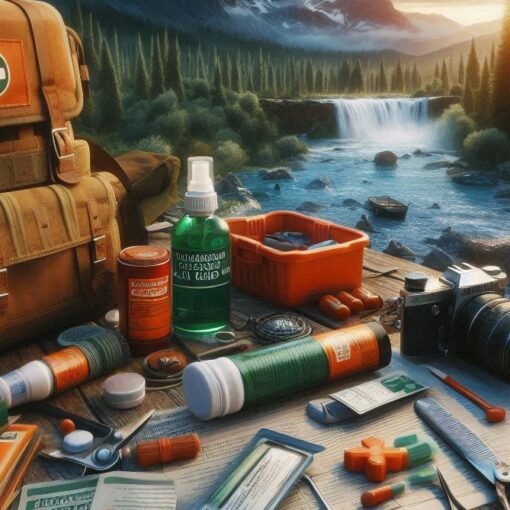Top Takeaways and Key Concepts
- Carry a map or compass on every hike to avoid getting lost.
- Tell someone your hiking plans before leaving so help can find you in an emergency.
- Use landmarks like unique rocks or trees to track your location and stay oriented.
- Stay calm when disoriented so you can think clearly and choose the safest next step.
- Ask for help from others if you’re unsure of your route or feel unsafe.
Summary of This Article
Please Note: This post may contain affiliate links. If you click one of them, we may receive a commission at no extra cost to you. As an Amazon Associate, I earn from qualifying purchases.
This article teaches simple but essential navigation skills to avoid getting lost outdoors. It emphasizes always carrying a map or compass, planning ahead, and letting someone know your hiking route before heading out. Paying attention to landmarks and trail signs helps with orientation, while staying calm in confusing situations prevents panic-based mistakes. The article also encourages using your senses, retracing your steps if needed, and asking others for help when necessary. With preparation and awareness, anyone can enjoy nature without losing their way—or their snacks to a curious bear.
Short Video Version of this Article
Picture yourself in the woods, with big trees and birds singing all around you. Isn’t it pretty? But then you see a bear family looking at your granola bars. Oh no! Nature is beautiful, yet it can be hard to understand, like putting together IKEA furniture without directions.
You think you’re on the correct path for a time. Then, out of nowhere, you start to wonder if wild berries are enough to keep you going. Spoiler alert: they probably aren’t! You don’t want to be the subject of a story about being lost in the woods.

Let’s talk about how to keep safe and avoid that scary situation. First, always have a compass or a map with you. They are like your best friends out there! If you become lost, just take them out and see where you are.
Before you go, it’s a good idea to notify someone where you’re going. If things go wrong, they will know where to look for you, like in an adventure movie, but hopefully without the drama!
Also, pay attention to what’s going on around you. Look for anything like giant rocks or trees that look odd. When everything starts to appear the same, they can help you find your way back.
If you’re ever not sure which way to go, stop and take a deep breath. It’s fine to stop for a moment and think things through instead than racing on without knowing what to do.
It doesn’t have to be hard to stay discovered in nature. Just keep these guidelines in mind and you’ll be ready for any adventure that comes your way! Also, if you pay attention, no bear will take your treats!
Understanding Your Surroundings
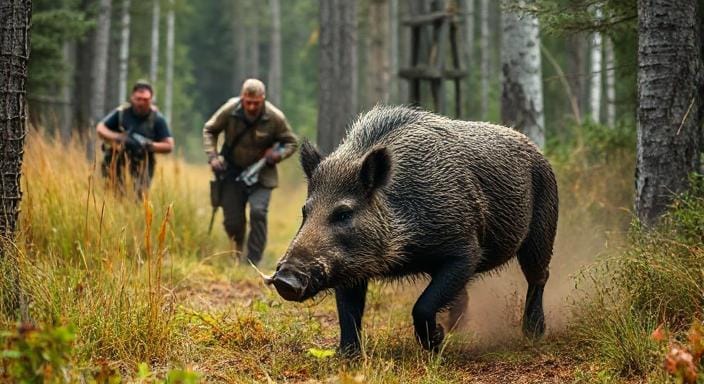
Before you step outside, take a moment to really understand where you’re going. I mean, really get it! You wouldn’t drive across town without checking Google Maps, right? Unless you like getting lost in neighborhoods that smell funny. So why would you hike into the wild without a map or at least a good sense of direction?
When planning your trip, study those maps like they’re the last slice of pizza at a party. Look closely at landmarks and trails. Check for any hazards too. Like areas where bears might hang out or paths that vanish into swamps. No one wants to be knee-deep in mud while thinking about how they got there.
Pay attention to signs along the trail! They can be super helpful—way more than your cousin Larry who thinks he’s an expert just because he watched “Survivor.” If there’s a sign pointing left but your gut says go right… maybe listen to your gut this time.
Trust me, it’s better to follow the signs than end up wandering around wondering if you’ll ever see home again. Enjoy the adventure but stay smart about it! It makes everything so much more fun when you’re not worrying about getting lost or stuck in some muddy mess. Plus, you’ll have stories to tell later that don’t involve panic and confusion!
The Magic of Navigation Tools
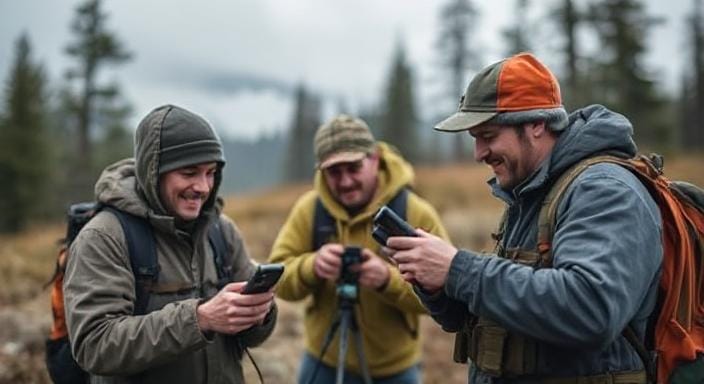
Now that you’ve got your map skills down pat (and hopefully avoided any swamps), let’s talk tools. No one expects Indiana Jones-level gear when venturing outdoors—though wouldn’t it be cool if we could just carry around a whip? But having basic navigation tools can make all the difference between enjoying nature and accidentally joining an episode of “Lost.”
A compass is a must-have! It might look like something from an old pirate movie, but it really helps when you know how to use it. Trust me on this. Spinning it around like it’s a magic eight ball won’t help at all when you’re trying to find north. If only life had easy answers like that, right?
Before heading out, take some time to learn how to read a compass. It’s not as hard as it sounds. Just think of it as learning a fun new trick! You’ll feel super cool being able to tell which way is which.
Also, don’t forget about your smartphone! Download offline maps before you leave home. Imagine pulling out your phone and confidently saying, “North is that way!” while secretly thinking, “Why didn’t I know this sooner?” It’s like having a little helper in your pocket.
These tools can make your adventure so much easier and way less stressful. You’ll be ready for anything Mother Nature throws your way. Plus, you’ll impress your friends with all this cool knowledge! Who knew getting lost could be avoided so easily?
Trusting Your Senses
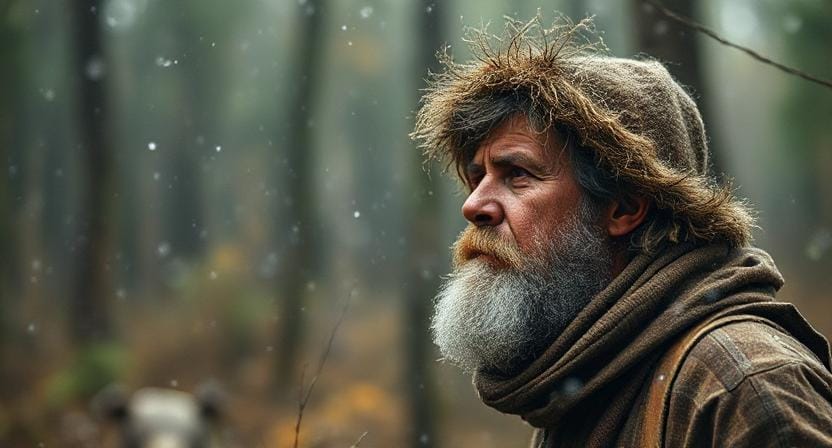
Let’s get real for a second: our senses can be incredibly useful when navigating through the great outdoors. Sure, they might not always lead us straight back home (I’ve definitely taken detours based solely on my craving for snacks), but they can help keep us grounded.
Pay attention to sounds! Listening closely can be super helpful. You might hear a bubbling stream nearby or even other hikers who seem way more prepared than you are. It’s like finding hidden treasures in the forest!
Smells can guide us too. If you catch a whiff of fresh pine needles mixed with campfire smoke, guess what? You’ve probably found civilization! Or maybe someone just made some really interesting food choices. Either way, it’s a good sign you’re not alone out there.
Speaking of food choices, keep track of what you eat along the way! Nothing says “lost” quite like wandering around aimlessly after munching on two bags of trail mix. I mean, those little nuts and raisins taste great, but they won’t help much if you’re lost and hungry later. It’s like thinking candy is dinner—fun at first, but not so great for your tummy later.
So pack some real snacks too! Think granola bars or fruit. They’ll give you energy and help keep your brain sharp when you need to figure out which way to go next. Staying fed means staying focused, and that’s key when you’re exploring the wild!
Creating Landmarks
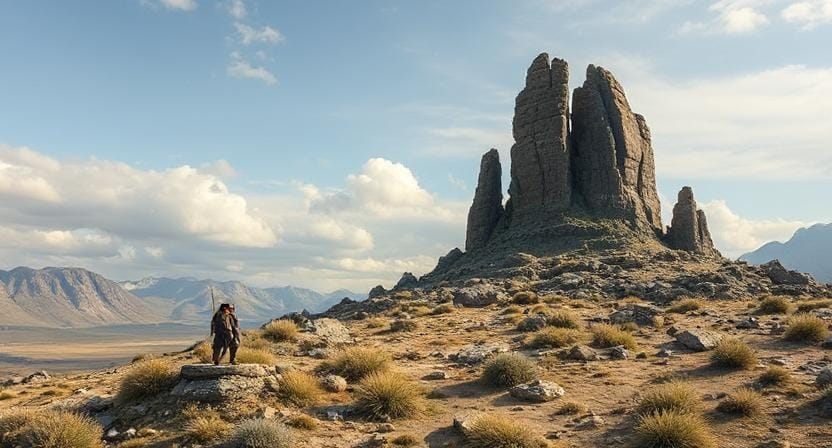
I understand completely. Trees are extremely beautiful, especially when they give us shade on hot excursions. But after hours of walking around, they all start to look the same, don’t they? That’s why making personal milestones is really useful.
You know how people say, “Don’t forget where you parked”? Use that thought here as well! As you walk, keep an eye out for unique objects. There could be a huge rock that looks like Elvis or a tree that looks like it’s been through a lot of hurricanes. These special things can assist you recall where you’ve been and where you need to go back.
Try to remember these places. If you want to get creative, you could even use sticks or stones to build small marks. Think about putting up little signs like “Elvis Rock” or “Old Tree.” It makes it easier to find your way back than playing hide-and-seek with Mother Nature!
When you see anything strange, take a moment to truly look at it. This helps you stay smart and concentrated. Plus, you’ll have entertaining stories to tell later about your hike! So the next time you’re outside, look for those strange landmarks and let them show you the way home.
The Importance of Staying Calm
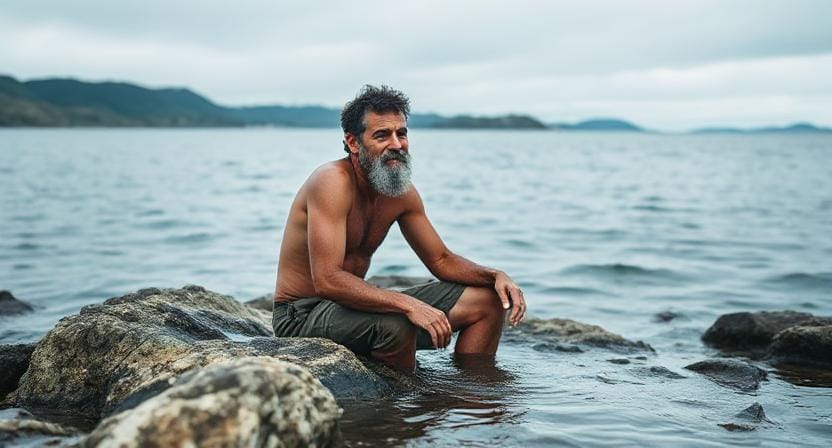
Picture this: you’ve been hiking for hours. Your legs feel heavy, and all of a sudden, panic hits you like mosquitoes at dusk. Oh no! You are lost! Take a breath. Getting upset doesn’t help unless you want to be the hero in an action movie.
It’s very vital to stay calm. It helps you think clearly, which is what you need when things get hard. Do you remember the deep breathing techniques we did in yoga class? This is the right time to employ them! Take deep breaths in and out. This can help you decide whether you want to climb Mount Everest today or whether you’d rather locate some shelter.
If you stay calm, you can focus on solving problems instead of worrying about things that aren’t real, like bears chasing for your granola bars. Imagine that those bears are just as lost as you are, and they’re probably wondering where their picnic went.
It’s easier to plan your future steps when you are calm. You might try to find familiar places or go back to where you started. Or you may find a pleasant place to sit and relax while you think things over. You can do it! Take it one step at a time.
Asking for Help
All right, let’s talk about something very significant. If you need help, don’t be afraid to ask for it! I’m not kidding. You can get wonderful advice about the routes and what’s going on around you from other hikers or park rangers who always seem much too delighted to be in the woods.
Give it some thought. You don’t know where you are and you’re scared. Seeing someone with a huge smile and a nice backpack? That could be your only chance! Those people usually know all the best ways to go around and where to find water. And they could even give you some of their food, which is great!
It’s not awful to say you need support. It doesn’t imply you’re weak; it indicates you’re smart! We all need a little push in the correct direction from time to time. Next time someone gives you advise while showing off their nice gear (the kind that looks like it belongs in an Instagram photo), pay close attention! They might help you avoid getting lost or running into that bear after all.
So don’t be afraid to ask for help or guidance. You never know when a nice conversation will turn into a time to help someone out. And who knows, you might even meet a new buddy along the road!
Frequently Asked Questions
What should I bring to avoid getting lost while hiking?
Always bring a map and a compass, even if you think you know the area. GPS and phones can lose signal or battery life, but a compass and physical map will always work and help you stay oriented.
Why is it important to tell someone my hiking plans?
Telling a friend or family member where you’re going and when you plan to return ensures that someone knows where to look for you if an emergency happens, making rescue faster and easier.
How do I use landmarks to stay on track?
Look for unique, memorable features like oddly shaped trees, large rock formations, or trail signs. Mentally note or mark these points so you can retrace your path if needed.
What should I do if I realize I’m lost?
Stop immediately, stay calm, and think before moving. Panic leads to poor choices. Use your map, compass, and surroundings to regain your bearings, or retrace your steps to your last known point.
Can I use a phone instead of a compass?
A phone with offline maps can be helpful, but it should never replace a compass. Batteries die and signals fail, so a compass is a reliable backup you should always carry.
How can my senses help me navigate in nature?
Listening for running water, smelling campfire smoke, or spotting distant clearings or trails can guide you toward people or safe areas. Your senses can help when tools aren’t enough.
When is it okay to ask for help?
Ask for help as soon as you feel unsure of your location or safety. Other hikers, park rangers, or anyone you meet on the trail can offer directions or assistance—it’s smart, not embarrassing.
Suggested External Resources:
Outdoor Survival Skills
https://www.outdoorsurvivalskills.com
Wilderness Navigation Techniques
https://www.wildernessnavigation.com
How To Use a Compass
https://www.howtouseacompass.com
Basic Map Reading Skills
https://www.basicmapreading.com

Kevin Collier is a seasoned outdoor enthusiast and writer for Trekbug.com, specializing in outdoor adventures, survival strategies, and prepping insights. With a deep love for nature and a commitment to self-sufficiency, Kevin empowers readers to embrace the wilderness confidently. He shares valuable tips, practical techniques, and inspiring stories, helping both novice and experienced adventurers develop essential skills for surviving and thriving in the great outdoors.




